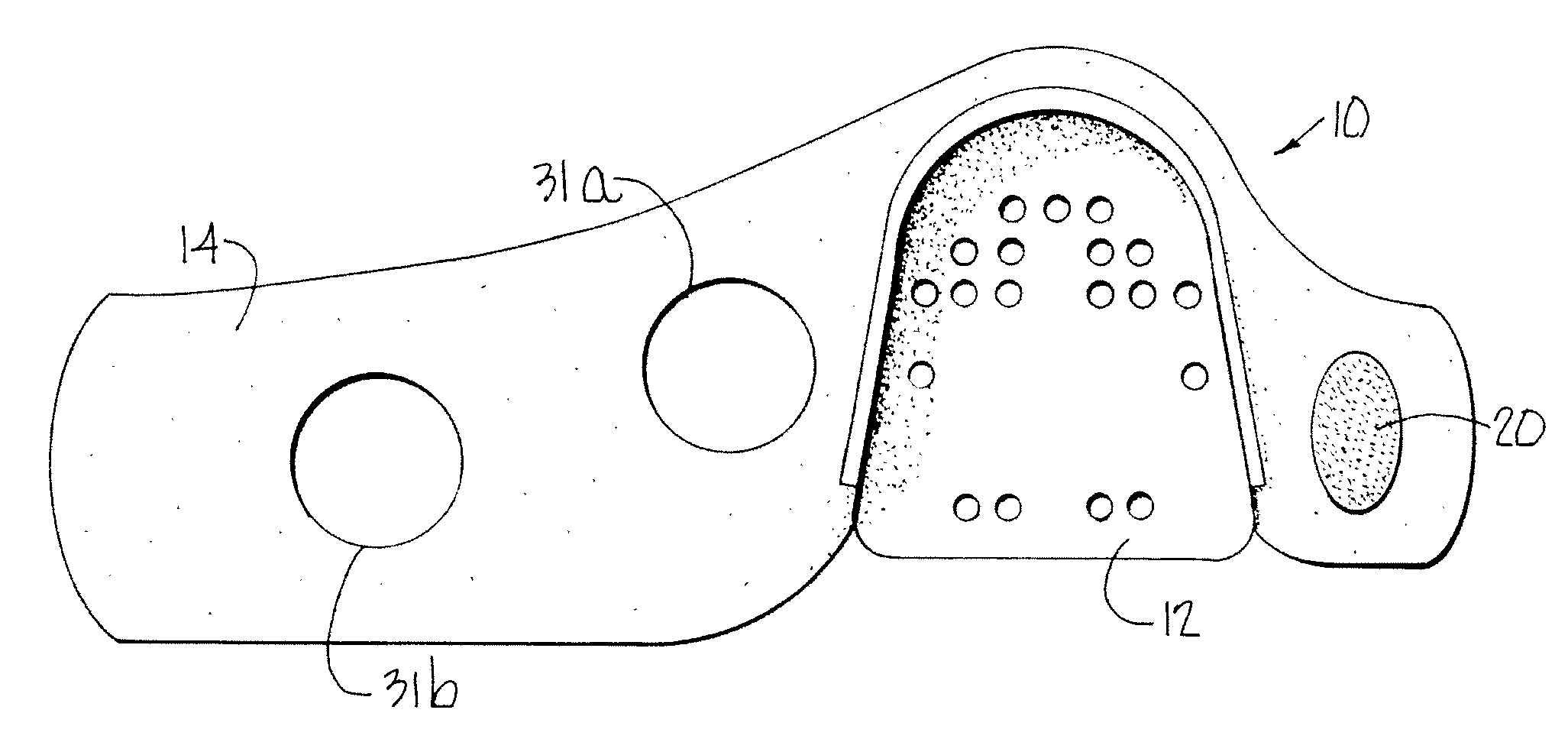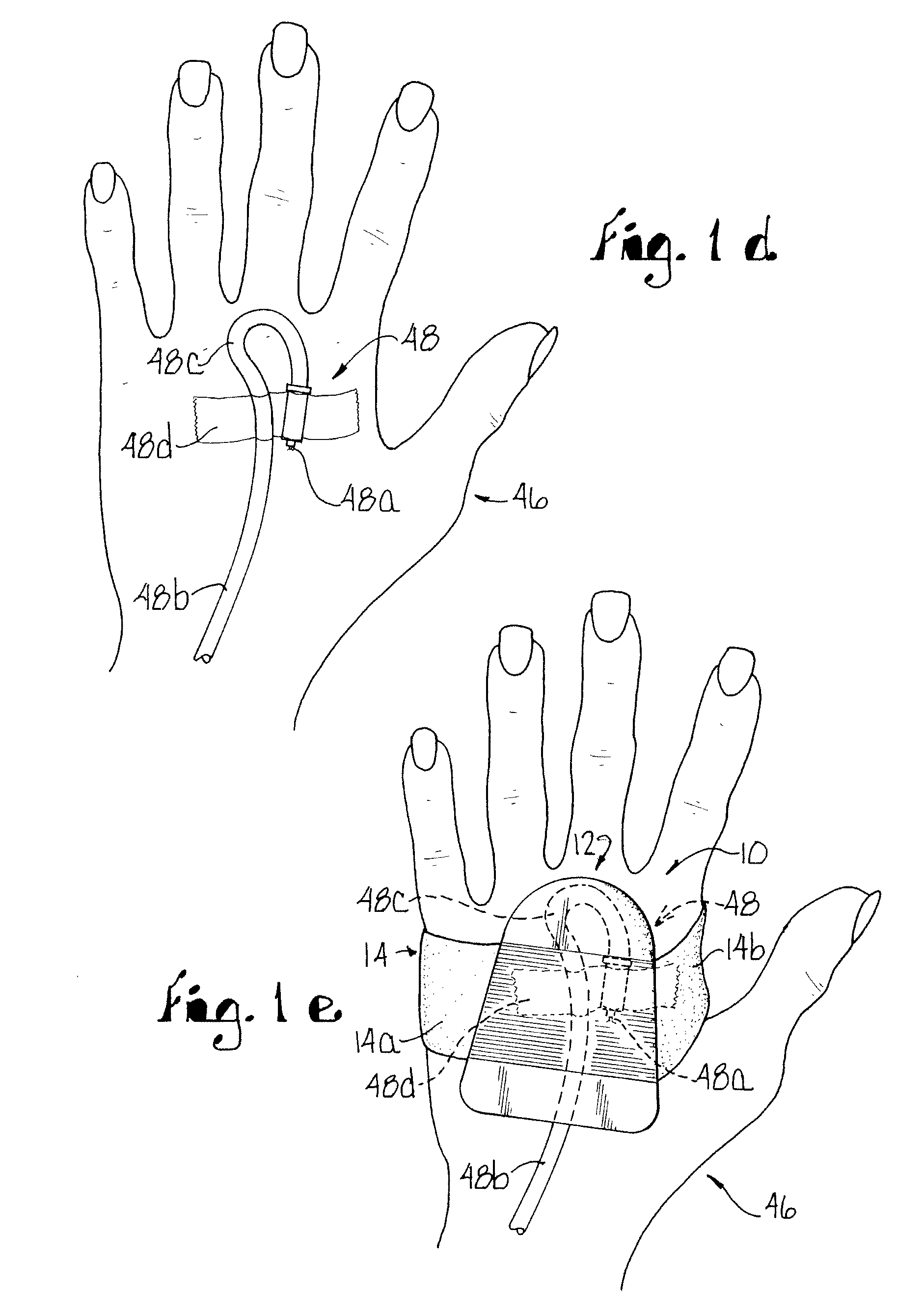Site guard for intravenous sites and other sensitive areas
a sensitive area and intravenous technology, applied in the field of site guards for intravenous sites and other sensitive areas, can solve the problems of high risk, high volume, and loss of fluid, and achieve the effects of reducing irritation, preventing the spread of infection, and ensuring the integrity of healthy and unhealthy skin
- Summary
- Abstract
- Description
- Claims
- Application Information
AI Technical Summary
Benefits of technology
Problems solved by technology
Method used
Image
Examples
Embodiment Construction
[0070]In general, the present invention relates to a site guard comprising a hollow member and a fabric connector having closure means to hold it in place over a site without applying adhesive to a patient's skin. The present invention may be embodied in many different forms. The discussion and drawings herein show a few specific embodiments with the understanding that the present disclosure is only an exemplification of the principles of the invention, and is not intended to limit the invention to the embodiments illustrated.
[0071]As used herein, “site” includes but is not limited to any wound, any opening, or any lesion in the skin, or more than one wound, opening or lesion, such as those made by needles and those made for peripheral or midline catheters, central venipuncture venous access catheters, tunneled catheters, nontunneled percutaneous central catheters; colostomy or ostomy bags, surgical drains; subcutaneous injections, pumps, subcutaneously implanted central venous acce...
PUM
 Login to View More
Login to View More Abstract
Description
Claims
Application Information
 Login to View More
Login to View More - R&D
- Intellectual Property
- Life Sciences
- Materials
- Tech Scout
- Unparalleled Data Quality
- Higher Quality Content
- 60% Fewer Hallucinations
Browse by: Latest US Patents, China's latest patents, Technical Efficacy Thesaurus, Application Domain, Technology Topic, Popular Technical Reports.
© 2025 PatSnap. All rights reserved.Legal|Privacy policy|Modern Slavery Act Transparency Statement|Sitemap|About US| Contact US: help@patsnap.com



